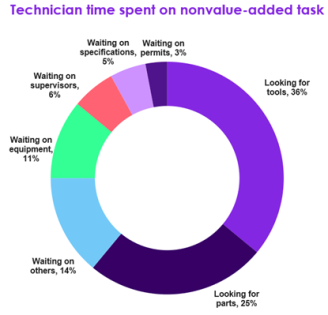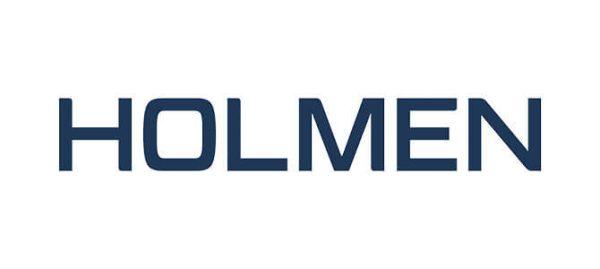In the IFS Enterprise Asset Management (EAM) Predictions for 2024, we predicted that maintenance technicians will spend less time on their screens than ever before.
This outcome isn’t due to a specific development but instead, a perfect storm of technological advances spurring on technician productivity.
Hands-on versus hands-off
The percentage of hands-on work performed by technicians each day is referred to as “wrench time”. Although a world-class wrench time average is considered to be 55%-65% of a day, most organizations average out to about 18%-30%.
So, what’s happening with the rest of the workday? Apparently, a lot of looking and waiting.

Instead of performing valuable maintenance work, technicians are spending more than half their day (61%) searching systems for tools and parts. Add to this the ever-growing administrative requirements, e.g., filing reports, inventory records, and other paperwork.
While screen time represents the lion’s share of nonvalue-added tasks, waiting is a close second, with 39% of the day spent waiting on equipment, people, and information. Then there is time spent driving to and from work sites—another low value activity.
Enabling technician productivity with IFS
Fortunately, rapid advancements in EAM and other technologies make it easy for maintenance technicians to work more efficiently throughout the day, optimizing time spent doing the highest value work. Here are some real-life examples:
Predictive maintenance planning
Maintenance work is complicated. Especially when it’s carried out reactively. With predictive maintenance planning, IFS customers benefit from advances in artificial intelligence (AI) and machine learning to achieve operational insights that help inform how and when technician time is utilized.
Predictive maintenance planning ensures all of the tools, equipment, and support are identified and organized in advance, allowing technicians to spend the majority of their time doing hands-on maintenance tasks.
 |
Holmen produces and sells timber, wood products, as well as paper and packaging products. The company selected IFS in part to support its data-driven maintenance model and ensure uptime. Holmen relies on IFS to provide data collection, insight, control, and stability to secure production capability through preventive maintenance. Read the full story. |
Planning and scheduling optimization
IFS customers leverage AI-powered automation capabilities to continually refine and improve maintenance schedules. The work is prioritized based on work type, work precedence, criticality, and priority, an immense advantage to asset-intensive industries such as manufacturing and refineries.
These efficiencies support lower costs and increased wrench time with improved operating margins. The system determines the location and provision of the required parts and even considers the best route for the maintenance technician to travel to reduce drive time.
Time spent, parts used, and other maintenance details are automatically integrated into backend systems, eliminating time-consuming administrative tasks.
Read the IFS Planning & Scheduling Optimization paper for more details.
Remote assistance
Instead of logging hours searching for manuals and repair information online, technicians connect directly with an expert to guide them through the repair. While this is still technically screen time, the maintenance worker is performing high value-added tasks while onscreen. Along with instant access to an expert, the lessons learned are applied to future jobs, shortening repair times while increasing first-time fix rates.
 |
Munters is a global leader in energy-efficient and sustainable air treatment solutions. With IFS Remote Assistance, Munters employees can be anywhere in an instant, providing customer support and first-time fix diagnoses. Drive time for on-site visits is reduced (and often eliminated), freeing up technician bandwidth for more meaningful work. Read the full story. |
Next steps with IFS
These are just a few examples of how enterprises are leveraging IFS to optimize how maintenance technicians spend their time. By ensuring these resources are delivering maximal value to the business, organizations are able to drive better profits, increase operating margins, and consistently exceed customer expectations.
For a sneak peek at what lies ahead in 2024, read the IFS Predictions 2024: Enterprise Asset Management post.